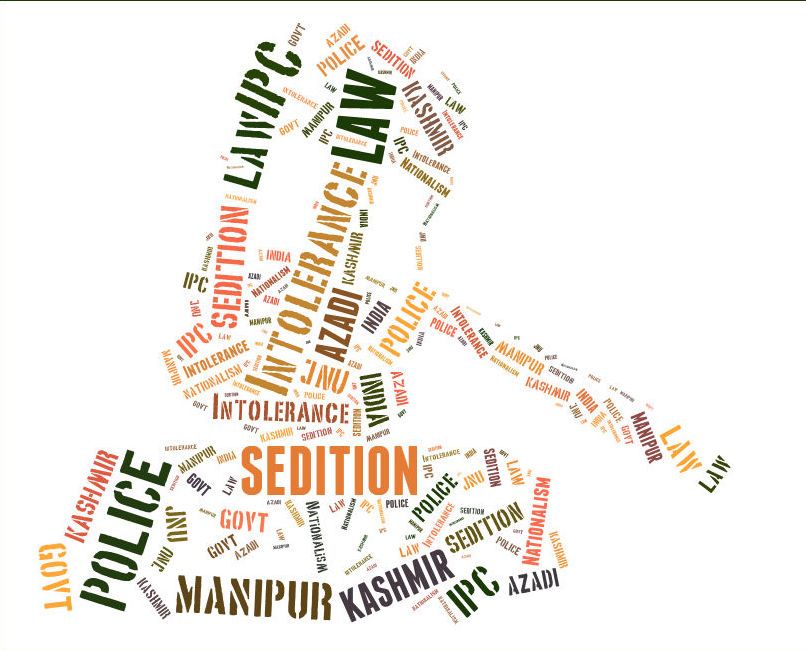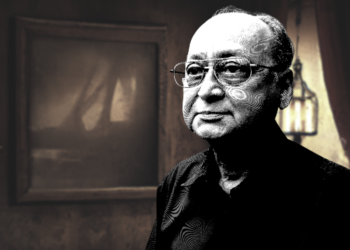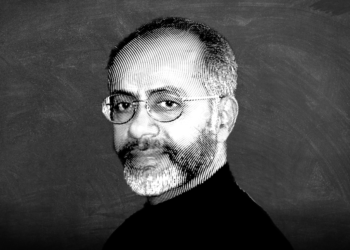Since the Disha Ravi case has sparked fresh discussions on the sedition law, it is worthwhile examining the case law that pertains to this provision. There is a view that Naxalism, the Kashmir issue, and other regional disturbances justify this law. In that case, why does India have separate penal provisions for secessionism and armed conflict? MOHD ZEESHAN AHMAD AND ZAIN HAIDER explore the implications of sedition through its history.

Suhas Palshikar observes in his 2017 book, Indian Democracy, that “…the future trajectory of democracy in India is predicated on people’s engagement with a lively critique of existing democratic practice, their informed interest in democratic contestations, and in the final, popular initiative.” For any of this to happen, Palshikar suggests, the socio-economic field must be democratised and democratic norms should become entrenched.
If the ongoing protests against three controversial farm laws are examined in light of Palshikar’s formulation, one can conclude that they are a sincere act that widens and deepens democracy. However, the arrest of Disha Ravi, a 22-year-old climate activist, on charges of sedition for creating and disseminating an online “protest toolkit” that outlines how to support the ongoing farmer protests, freezes the enterprise of deepening democracy. Disha’s arrest criminalises something as essential as dissent which goes against the philosophy of free speech, a sine qua non for democracy.
Following Disha’s arrest, large-scale public protests were organised, asking for her immediate release. Given the historical misuse of sedition law, once again there are vehement demands by civil society for it to be scrapped. This throws up a question: what makes the sedition law antithetical to free speech jurisprudence in India?
The answer to this short but complex question lies in the basic nature of the sedition law, and the institution through which it is exercised.
Colonial Continuity
Gautam Bhatia writes in Transformativ
During his infamous 1922 trial for sedition, which was instituted for writing articles in Young India, Mahatma Gandhi called this law the “prince among the political sections” of the IPC. In the 2016 JNU sedition case, it was alleged that “anti-national” slogans were raised, though the matter still awaits trial. Another outrageous use of the law in recent years was when 10,000 Adivasis from a district in Jharkhand who were struggling against a government takeover of their land, were charged with seditions. These distressing developments show how section 124A has become a monumental tapestry of misuse.
Background to introduction of sedition provision in 1870
Though the British colonial power was successful in crushing the 1857 revolt, the seed of anti-colonial nationalism had already been sown, and now it started pushing upwards.
The Wahabi Movement, basically an Islamic revivalist movement that was active since the 1830s, played a significant role during and after the revolt of 1857. Historian KM Ashraf wrote that since they were “armed with a consistent anti-British ideology”, they could sustain the rebels in power at Delhi and other centres of the revolt.
Meanwhile, nationalist leaders, through the vernacular press, were also raising political consciousness in the country and exposing the inhumanity of colonial rule. Dadabhai Naroji framed the “Drain of Wealth” theory in 1867 on how the colonial state was exploiting India economically, a theory that spread far and wide.
The colonial regime sought an instrument to curb these growing assertions by Indians, and the sedition law became that tool. When the sedition law was introduced in 1870 as an amendment to the IPC, the Wahabi Movement was also a pretext. James Stephen, the law member of the Governor General’s Executive Council, while introducing the section, specifically cited this movement as a major bugbear.
Sedition in the Indian Penal Code
The sedition law was introduced to clamp down on Indians and stifle dissenting nationalists. However, even the colonial rulers cited an altruistic reason for its introduction. Stephen on 2 August 1870, introduced the law saying the Indian sedition provision was substantially similar to the one in England. He did not mention that in India it would be used against subjects, unlike the British citizens, who had a bundle of other safeguards.
An amendment to the provision in 1898, after the trial of Bal Gangadhar Tilak in 1897, made the sedition law even more draconian in India. The backdrop was of anti-colonial build-up via protests against the Vernacular Press Act, 1878, the controversy created by the Ilbert Bil, 1882, and the formation of the Indian National Congress in 1885. Thus the words “hatred” and “contempt” were added to “disaffection” in the definition of sedition. These made the operative part of this law even more oppressive.
The first known registered sedition trial was held in 1891 in the Calcutta High Court, nearly two decades after the law was enacted. Queen Empress vs Jogendra Chunder Bose was a precursor to a peculiar form of colonial power-play: wide and vague interpretations were given to laws to ensnare Indian dissidents, as happened in Tilak’s 1897 trial.
In Jogendra Chunder Bose, an article published in the magazine, Bangobasi, criticised the Age of Consent Act, 1893. The court argued that the intention to create disaffection by calculated words against the state was sufficient to invite this law. Disturbance, actual or otherwise, was irrelevant.
In Queen Empress vs Bal Gangadhar Tilak, an allegedly seditious speech commemorating the killing of Afzal Khan by Shivaji was the court’s concern. The court concluded that the assassination of WC Rand and Lt. Ayerst was the result of speeches that instigated the killings. “Disaffection” was interpreted as “disloyalty”, “ill-will” and “enmity”. It was also held that the degree of such feelings that were provoked was immaterial.
In 1942, the sedition law was partly diluted by the Chief Justice of the Federal Court, Maurice Gwyer, in Niharendu Dutt Majumdar and Others vs King Emperor. In 1947, the Privy Council over-ruled this progressive judgement.
Constitution: a break from the past
Immediately after the Constitution came into force, the Supreme Court was called upon to decide cases related to restrictions on freedom of speech. Initially, in Brij Bhushan vs The State of Delhi (1950) and Romesh Thappar vs State of Madras, the court decisively favoured free speech and other civil liberties.
In both Brij Bhushan and Romesh Thappar, pre-censorship and bans were rejected for restricting fundamental rights [Article 19(1)(a)]. The court said freedom of speech could not be restricted except on grounds enumerated in Article 19 (2).
Section 124A was not an issue in Romesh Thapar, but Justice Patanjali Shastri observed that deletion of the word “sedition” from the Constitution shows that criticism of the government is permissible, provided it does not undermine state security or promote the overthrow of the state.
These decisions did not go down well with the government. The following year, an amendment overruled these judgments, first by adding “public order” as one of the fetters to freedoms enshrined by Art 19(2).
In Master Tara Singh vs State of Punjab and Ram Nandan vs State of Uttar Pradesh, the Punjab and Allahabad high courts, respectively declared section 124A unconstitutional. However, in Debi Soren vs State of Bihar, the Patna High Court upheld the constitutional validity of the law.
These conflicting views by different high courts became the background against which the constitutional validity of section 124A was tested in the Kedar Nath Singh case in 1962.
Revalidation of sedition law
In Kedar Nath Singh vs State of Bihar (1962) an intemperate speech delivered by a member of the Forward Bloc was charged with sedition. When the court examined the matter, it held that speech or writing to which “subverting the government by violent means” is implicit—including the notion of “revolution”—is seditious. So, not just incitement, even a failed attempt to incite is an offence. Further, a “tendency” to create public disorder was recognised as seditious. The court did not take into account a test that had recently been enunciated in the Ram Manohar Lohiya case, wherein an alleged act and public disorder have to be “proximate” for the act to be seditious.
In Kedar Nath Singh vs State of Bihar, the Supreme Court was called to examine whether an intemperate speech delivered by a member of the Forward Bloc was seditious. The court held that speech or writing in which ‘subverting the government by violent means’ is implicit—including talk of ‘revolution’—is seditious. So, not just incitement, even a failed attempt to incite is an offence
In Kedar Nath Singh, the Supreme Court read down section 124A to allow criticism of the government or disapprobation of its policies. However, the court seeks to draw an “unreasonable distinction” between criticism of the government’s measures and criticism of the government itself. It might be “impossible to maintain” such fine distinctions in “concrete cases”, the court held.
The court also did not consider the Report of the Press Laws Enquiry Committee, 1948, which recommended bringing sedition in India in sync with its British counterpart. Nor did it consider the Press Commission’s 1954 recommendation to repeal the law altogether.
So the Kedar Nath Singh ruling is a curious mix of the interpretation Justice Maurice Gwyer gave to the sedition law in Niharendu Dutt and the Privy Council’s views expressed in Sadashiv Narayan.
Moreover, in a tactical bid to save section 124A, the Supreme Court brought it within the ambit of the “public order” restriction. This left ample scope for its misuse in the future, and arguably, goes against the intent of the Constitution.
KM Munshi made a case to delete sedition from the Constitution, saying that the “essence of democracy is criticism of government”. He said that even advocating a different system of government should be welcomed, for it gives democracy vitality.
The aftermath of Kedar Nath Singh
The Kedar Nath judgment has become repugnant in light of legal developments since the 1960s. In Balwant Singh vs State of Punjab, the prosecutrix relied on the earlier ruling, but the court held that unless there is public disorder merely raising a pro-Khalistan slogan cannot attract section 124A. In Bilal Ahmed Kaloo vs State of Andhra Pradesh the Supreme Court dropped sedition charges and lamented that the law was being casually invoked to infringe on citizens’ liberty.
The 2015 Shreya Singhal judgment is a high watermark of free-speech jurisprudence. The court says in it that both “advocacy” and “discussion”, howsoever unpopular they may be, are at the heart of Article 19(1) unless there is actual “instigation”.
Yet no government, nor a court, has asked to scrap the law. In Common Cause vs Union of India, the Supreme Court had an opportunity to do so, but it asked authorities to go by the Kedar Nath ruling instead.
The 2015 Shreya Singhal judgment is a high watermark of free-speech jurisprudence. The court says in it that both “advocacy” and “discussion”, howsoever unpopular they may be, are at the heart of Article 19(1) unless there is actual “instigation”. Yet no government, nor a court, has asked to scrap the law. In Common Cause vs Union of India, the Supreme Court had an opportunity to do so, but it asked authorities to go by the Kedar Nath ruling instead.
Chitranshul Sinha writes in The Great Repression that, Kedar Nath “does not provide for pre-arrest requirements and compliances”. That is, any person arrested for sedition will have to obtain bail, attend proceedings, make themselves present for investigations, etc. before the charge-sheet is filed or the case is closed.
Lack of guidelines on arrest and inquiry gives further room for abuse of this law. As the latest National Crime Records Bureau data shows, there is a mere 3.3% conviction rate for sedition in the 93 registered cases.
Towards freedom
In retrospect, the Kedar Nath judgment is akin to a tinder box. Its inherent infirmities make it very likely that the sedition law will be applied incorrectly. Such a ruling is a liability on free-speech jurisprudence and contrary to India’s long democratic tradition.
Lack of guidelines on arrest and inquiry gives further room for abuse of this law. As the latest National Crime Records Bureau data shows, there is a mere 3.3% conviction rate for sedition in the 93 registered cases. The UK scrapped its sedition law in 2009 on grounds that it is arcane and irrelevant and suppresses freedom of speech. This should be India’s aim too. The Law Commission said in a 2018 consultation paper that it is “time to re-think or repeal” the section.
There is a view that Naxalism in eastern India and conflicts in Jammu and Kashmir and other regions make sedition law essential. However, the IPC deals with secessionism and armed conflicts already—sections 121-140 deals with waging war against the state, sections 141 to 160 deal with offences against public tranquillity, section 153A talks of enmity amongst groups, and so on.
The issue with section 124A is its colonial spirit and draconian application. Therefore, reading it down can reduce the degree and frequency of its misuse, but not end the problem. The United Kingdom scrapped its sedition law in 2009 on grounds that it is arcane and irrelevant and suppresses freedom of speech. This should be India’s aim too. The Law Commission of India said in a 2018 consultation paper that it is “time to re-think or repeal” the section.
The arrest of Disha under this law has reinforced the belief that it should be done away with.




